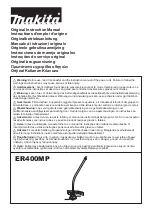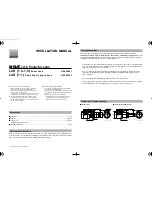
-48-
v5.8
GPS
9. GPS
Waspmote can integrate a GPS receiver which allows to know the exact outside location of the mote anytime. In this way the
position of the mote can be obtained and even the current time and date, to synchronize the Waspmote internal clock (RTC)
with the real time.
•
Model:
JN3 (Telit)
•
Sensitivity :
•
- Acquisition: -147 dBm
•
- Navigation: -160 dBm
•
- Tracking: -163 dBm
•
Hot Start Time:
<1s
•
Cold Start Time:
<35s
•
Antenna connector:
UFL
•
External antenna:
26 dBi
•
Possitional accuracy error
< 2.5 m
•
Speed accuracy
< 0.01 m/s
•
EGNOS, WAAS, GAGAN and MSAS capability
The GPS module gives us information about:
•
height
•
longitude
•
height
•
speed
•
direction
•
date/time
functions such as:
•
ephemeris
There are two operational modes: NMEA (National Marine Electronic Association) mode and binary mode. NMEA mode uses
statements from this standard to obtain
location
,
time
and
date
. The binary mode is based on the sending of structured frames
to establish communication between the microcontroller and the GPS receiver, i.e. to read/set ephemeris.
The different types of NMEA statements are:
•
NMEA GGA: provides location data and an indicator of data accuracy.
•
NMEA GSA: provides the status of the satellites the GPS receiver has been connected to.
•
NMEA GSV: provides information about the satellites the GPS receiver has been connected to.
•
NMEA RMC: provides information about the date, time, location and speed.
•
NMEA VTG: provides information about the speed and course of the GPS receiver.
•
NEMA GLL: provides information about the location of the GPS receiver.
The most important NMEA statements are the GGA statements which provide a validity indicator of the measurement carried
out, the RMC statement which provides location, speed and date/time and the GSA statement which provides information
about the status of the satellites the GPS receiver has been connected to.
(To obtain more information about the NMEA standard and the NMEA statements, visit the website:
















































